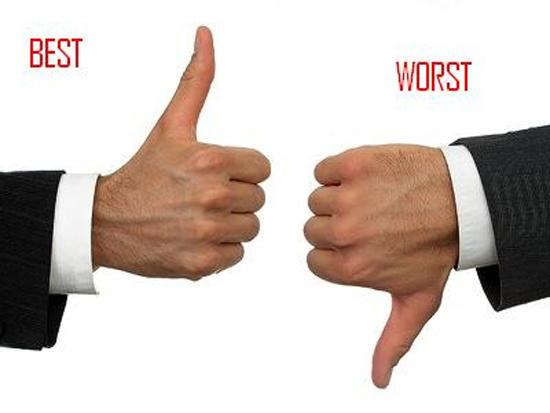Power Engineering
The opening session on Solar Power International 2012 kicked off on Monday with a “Newlywed Game”-style “gameshow” among six industry leaders, as well as inspiring presentations from Julia Hamm, president and CEO of the Solar Electric Power Association and Rhone Resch, president and CEO of the Solar Energy Industries Association (SEIA).
Prior to the panel discussion, Hamm and Resch hashed out the state of the industry. Resch highlighted the classic Charles Dickens’ novel “A Tale of Two Cities,” comparing the state of the industry to its opening lines:
It was the best of times, it was the worst of times, it was the age of wisdom, it was the age of foolishness, it was the epoch of belief, it was the epoch of incredulity, it was the season of Light, it was the season of Darkness.
“Even in the worst economic times, our industry is growing,” Resch said. The U.S. achieved its best quarter in history for the utility solar sector in the second quarter of 2012, according to a report released Monday by GTM Research and SEIA. Currently, over half of the states have more than 5 MW of solar installed, and the majority of the U.S. population lives in states that have more than 50 MW of solar on line, Resch said.
However, the “worst of times” could be yet to come for the solar industry. “Our industry is under direct attack,” Resch said. “Conservative super packs are attacking clean energy.” Over $1 billion is being spent on negative advertising against clean energy during the presidential campaign, Resch said.
But some companies in the solar industry may have fueled some of the negativity toward solar power. The improper actions of a few solar companies could result in serious repercussions upon the entire industry, Resch said, as some have inflated the base costs of their system and even misused Treasury Grant funds. In fact, the soon-to-be-released October 2012 Consumer Reports will report on fraudulent business practices in solar as being “one of the biggest scams in the country,” he said.
“We must have pride and make sure every system we install performs even better than promised,” Resch said, and encouraged the entire industry to adopt the code of ethics touted by SEIA.
Hamm reminded the audience how one year ago, she presented a hypothetical world 20 years in the future in which 30 percent of all electric capacity comes from solar. Over the past year, Hamm has had the opportunity to share that scenario with utility leaders, and “most of the utility believe the scenario could be a reality.”
The future growth of the solar market will be largely dependent on four factors, Hamm said: social dynamics, political issues, technological issues and economic issues. While the price of natural gas is low now, the industry should remember that in 2008, it was nearly four times its current cost. And increasing demand for coal coming from China and the price on carbon regulation will only cause coal’s cost to rise, she said.
Resch and Hamm also hosted a “gameshow” for six industry leaders similar to the “Newlywed Show,” in which the panelists held up signs guessing the answers of the other panelists related to solar industry questions. The panel consisted of Nancy Pfund, managing partner, DBL Investors; Eric Silagy, president, Florida Power & Light (FP&L); Peter Marte, president and CEO, Hannah Solar;
Tom Doyle, president and CEO, NRG Solar; Jurgen Krehnke, former president and general manager, SMA America, LLC; and Thomas Werner, President and CEO, SunPower Corp.
The panelists discussed politics, solar installation growth, downsizing of solar manufacturing, ramping up of distributed generation and storage and more. All six panelists agreed that the future number of solar gigawatts in the U.S. will be partially dependent on subsidies.
“It’s not that industry can’t survive without an investment tax credit, but it has to be a gradual weaning,” Pfund said. “If it’s going to happen for renewables, it has to happen for fossil (fuels) as well.”
The panelists questioned whether or not regulated “monopoly” utilities will exist in the future, and all six said they will.
 “We live in a world of Southern Company,” Marte said. “They’re the fourth branch of government. They’re not going away.”
“We live in a world of Southern Company,” Marte said. “They’re the fourth branch of government. They’re not going away.”
Silagy, representing the sole utility on the panel (FP&L), said the solar industry should not view utilities as the enemy. “We don’t believe there’s any one solution. I’ve got to look at what’s best for our customers. They want reliability and low cost.”
Many of the panelists believe that distributed generation will be a way to increase solar on the utility-scale. Jurgen said that distributed generation is likely to grow much more quickly than expected.
When asked if on-site storage will be common for generation in the next five years, half of the panelists responded “yes.” However, Doyle said that many in the solar industry will be too concerned with minimizing costs over the next few years to focus on storage. “We’re focused on driving down costs to compete with retail pricing over the next five years, and I don’t think storage is going to help us meet that.”
The panelists also discussed the topic of downsizing solar manufacturing. Doyle projected that there will be fewer than 100 solar manufacturers worldwide by 2016.
“It would make the industry easier to understand,” Doyle said. “The competition amongst them would be fierce. If there is a smaller number of manufacturers, there will be economies of scale.”
And even though some solar companies may be closing their doors over the next few years, all of the panelists said they expect the number of Americans employed in the solar industry to increase by 2016. While the solar industry currently has just over 100,000 employees, Pfund said she expects the industry to employ over 500,000 in the next few years.
“This crossing the chasm – finding solar at Home Depot or your auto dealership – is going to cause lot more opportunity for solar on the downstream,” Pfund said.
The panel ended with the question that seems to be ringing in the industry’s ears: How much will the upcoming presidential election affect the solar industry? Most of the panelists agreed that no matter the outcome, solar will continue to be a growing form of power generation in the U.S.
“America’s got to lead in renewable energy,” Werner said. “We’re the innovators in the world; let’s drive innovation.













